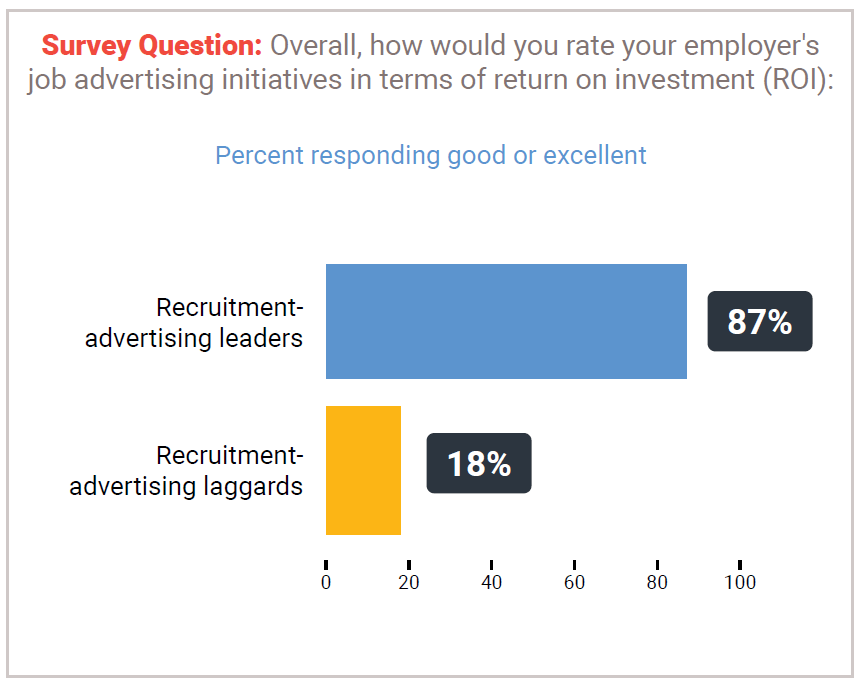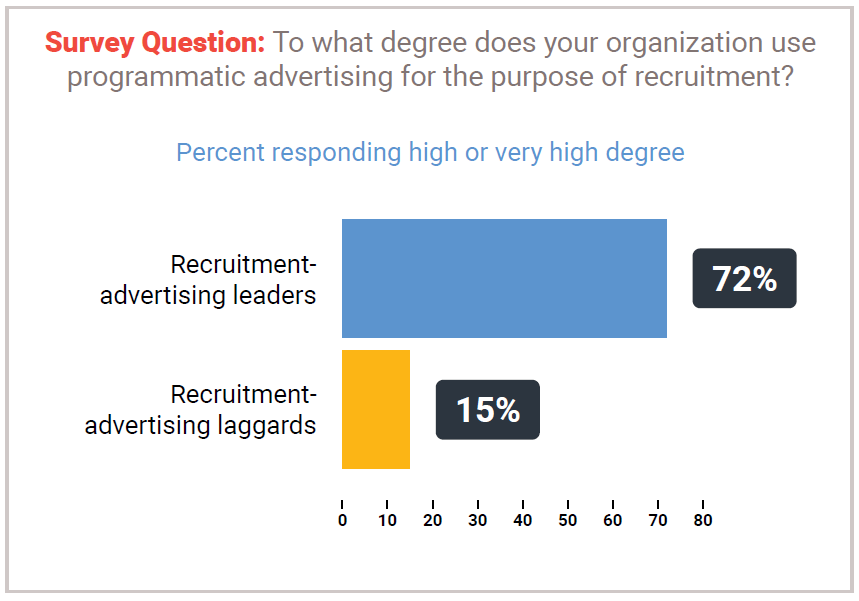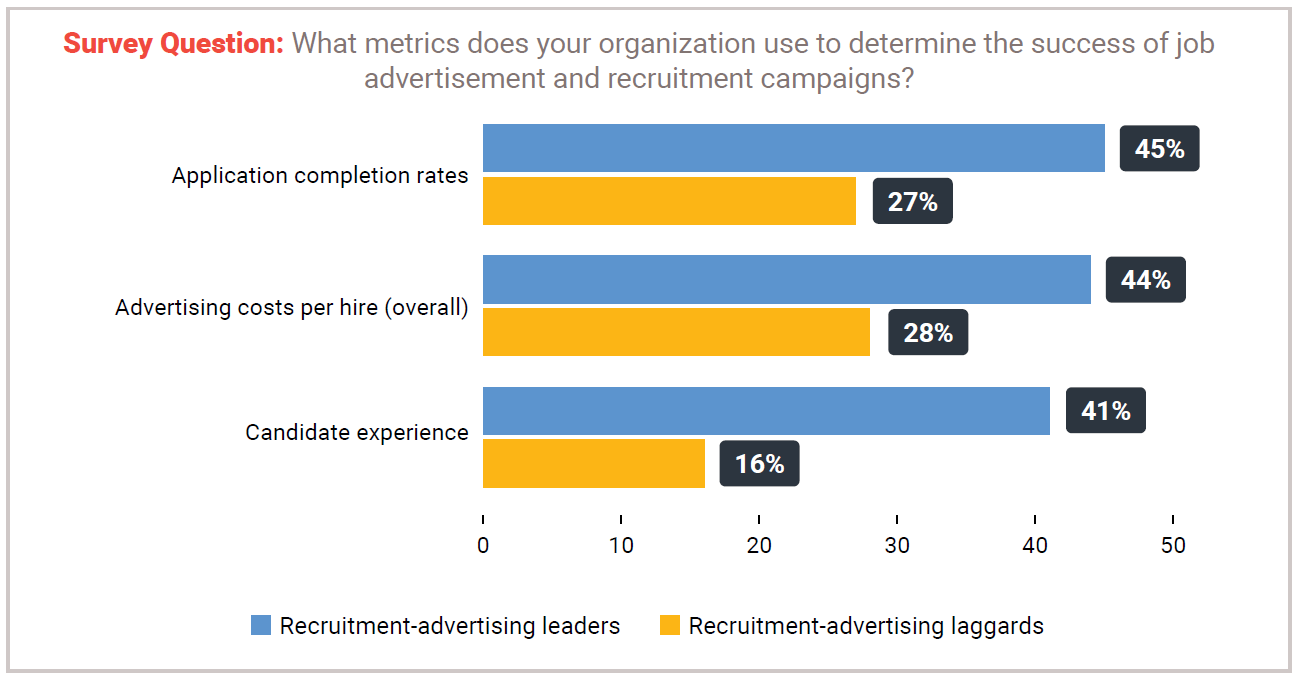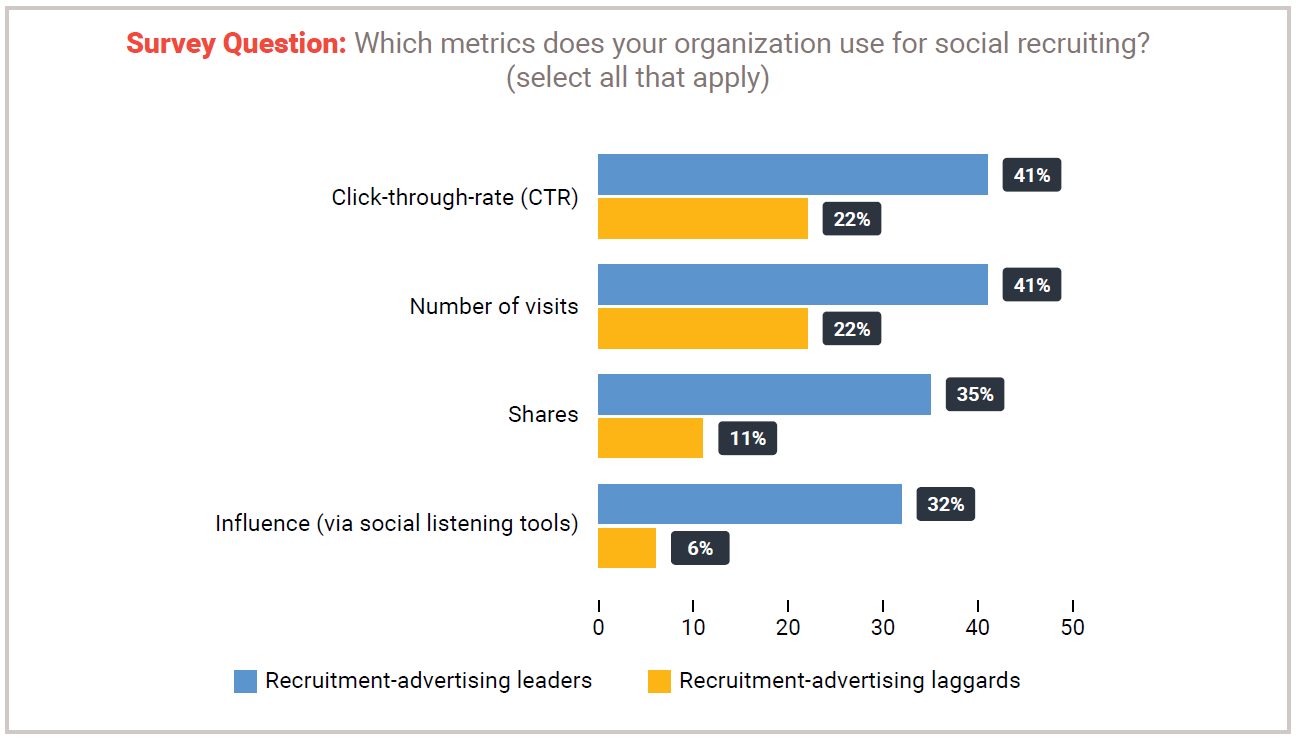For this part of the report, we conducted various analyses to gain insights into which practices are most widely used by organizations with higher levels of success. Specifically, we analyzed responses and segmented the data into two groups:
- Recruitment-advertising leaders: those who report that their organization’s recruitment-advertising efforts do an excellent job at attracting high-quality candidates.
- Recruitment-advertising laggards: those who report their organization’s recruitment-advertising efforts do a moderate or poor job at attracting high-quality candidates.
Of course, correlation is not the same as causation. While we cannot state that any particular practice will definitely lead to recruitmentadvertising success, we do see intriguing relationships that might result in greater success.

Recruitment-advertising leaders are more likely to report that their job advertising initiatives result in a good or excellent return on investment
Eighty-seven percent of the recruitment-advertising leaders rate their ROI as good or excellent. This compares to only 18% for recruitmentadvertising laggards.
Recruitment-advertising leaders are more likely to use programmatic advertising
Programmatic advertising typically involves an automated way of displaying ads to specific types of people to whom you wish to show your advertising. Programmatic ads are placed using artificial intelligence and, sometimes, real-time bidding for online display, social media advertising, and other types of ad campaigns. The underlying idea is to pay for the performance of ads rather than to pay for the display of ads.
We asked responding HR professionals about whether they use programmatic advertising, and we found that 72% of recruitmentadvertising leaders use programmatic advertising to a high or very high degree. By comparison, only 15% of recruitment-advertising laggards do.
Recruitment-advertising leaders make far greater use of texting to attract candidates
Fifty-seven percent of recruitment-advertising leaders use texting for recruitment advertising to a high or very high degree. To compare, only 6% of recruitment-advertising laggards say the same. In fact the majority of laggards (58%) report using no texting at all.
Recruitment-advertising leaders are more likely to embrace certain metrics to gauge the impact of their recruitment advertising efforts
Recruitment-advertising leaders are far more likely to use certain metrics compared with recruitment-advertising laggards. Although recruitmentadvertising leaders are more likely than laggards to use most of the metrics cited in the study, the gaps are especially large in three areas:
- application completion rates
- advertising cost per hire
- candidate experience
Recruitment-advertising leaders are also considerably more likely to use social recruiting metrics, from basic click-through-rates to measures of social influence.
Recruitment-advertising leaders are less likely to say their organizations experience barriers to successful recruitment advertising
Whereas only 6% of recruitment-advertising laggards say they do not experience barriers to successful recruitment advertising, the same is true for 33% of leaders. Laggards are much more likely to say that one of the barriers they experience is a lack of financial resources (43%) compared to just 20% of recruitment-advertising leaders.



